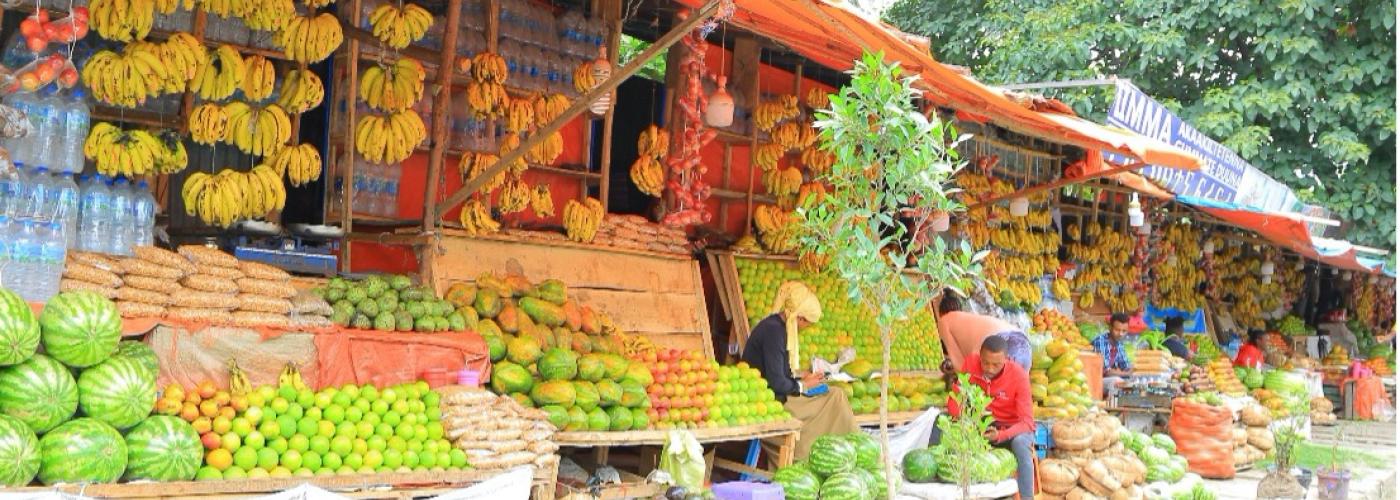Increased Food Safety, Reduced Food Loss
Image

How Feed the Future Business Drivers for Food Safety is building capacity for small- and medium-sized food businesses to be leaders in food loss solutions
In economies of every scale, food loss and waste is not only lost food, but lost environmental resources, nutrients, and money at each stage of the food chain. Different value chains have varying rates of food loss, with fresh fruits, vegetables, and dairy value chains experiencing high losses due to their perishable nature. This food loss represents both a financial loss to small- and medium-sized enterprises and also a nutrient loss to consumers, as highly perishable foods tend to be the most nutrient-dense. Post-farm gate food loss is oftentimes accompanied by food safety concerns, including inadequate food handling and packing, temperature control, hygiene, and physical, biological, and chemical contamination. While larger food companies may have resources dedicated to reducing this waste throughout the food chain, smaller enterprises have less access to technologies and capital to reduce waste, despite their critical role in the food system.
To address this resource gap, the Feed the Future Business Drivers for Food Safety (BD4FS), funded by USAID and implemented by Food Enterprise Solutions (FES), helps businesses measure the amount of food loss and implement solutions to prevent further losses as part of a culture of food safety. As a part of the goal of overall improved food handling, BD4FS partners with growing food businesses (GFBs) to identify opportunities for improved food handling. Although oftentimes overlooked at the GFB level, food loss reduction is an effective way for food businesses to decrease their exposure to a variety of financial, supply chain, and regulatory risks. Implementation costs of proper handling methods and technologies remain a barrier; therefore, to make a business case for food loss reduction, the marginal benefit of newly adopted practices must outweigh the marginal cost. To this end, BD4FS developed food loss protocols to help GFBs track the amount of food loss and calculate its associated costs. Additionally, BD4FS created a manual of affordable tools and technologies that GFBs can adopt to safely process, handle, transport, and store foods.
In addition to building capacity for food loss prevention, BD4FS training empowers GFBs to reinvest in local supply chains while combatting post-harvest loss. Siny Samba, founder of Senegalese baby food company Le Lionceau, notes that food loss in the region is high due in part to the lack of local processing facilities to buy fresh fruits and vegetables. Since partnering with BD4FS for food handling training, Le Lionceau has been able to safely increase production and plans to open a new processing facility. As production increases, Le Lionceau is able to source more products from local and sustainable farms, with a focus on produce that would otherwise go unused. For example, up to 50% of Senegalese mangoes are lost before harvest – to combat this, Ms. Samba’s team procures these mangos for purees.5 In addition to having a lower risk of food loss due to improper handling, Le Lionceau is creating a market for foods that have been diverted from being lost in the field. The resulting products are 100% Senegalese, reducing the need for imported products and making traditional Senegalese baby foods accessible to more people.
In addition, Freshktm – a Nepali GFB – ensures the least amount of food waste through the implementation of an artificial intelligence (AI) based demand and sales forecast that enables a balance between production and consumption. Freshktm further ensures that nothing goes to waste by selling A and B grades to consumers and processing C grades into compost which is used on their land. While the main focus of BD4FS is accelerating food safety uptake in GFBs’ business models and operations, reducing postharvest and post-slaughter food loss is also an opportunity for businesses to increase retention of nutritious foods, improve investment readiness, and grow profits.


